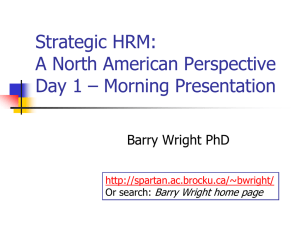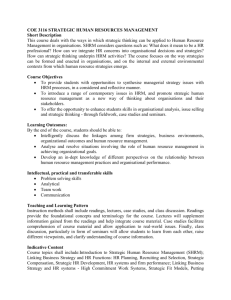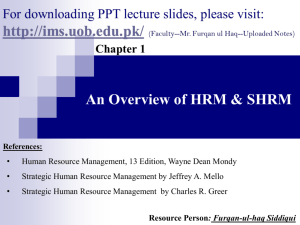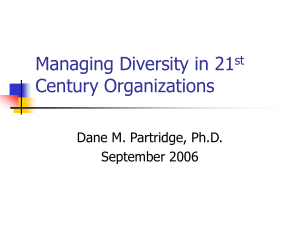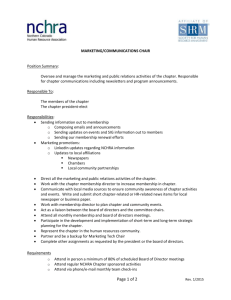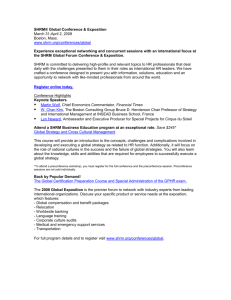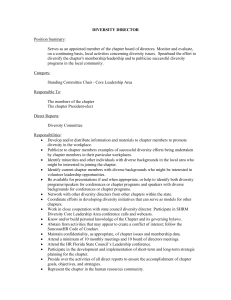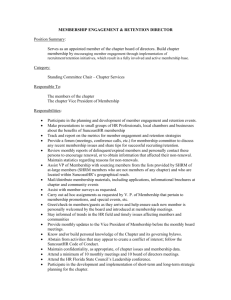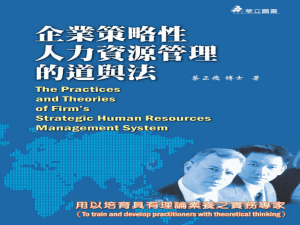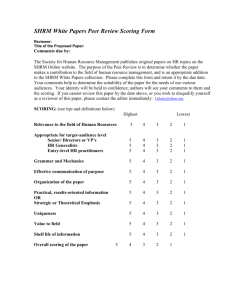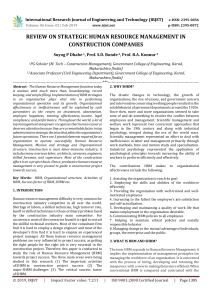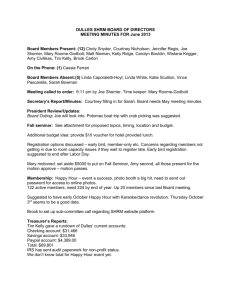Strategic Human Resource Management- 2071 Mangsir
advertisement
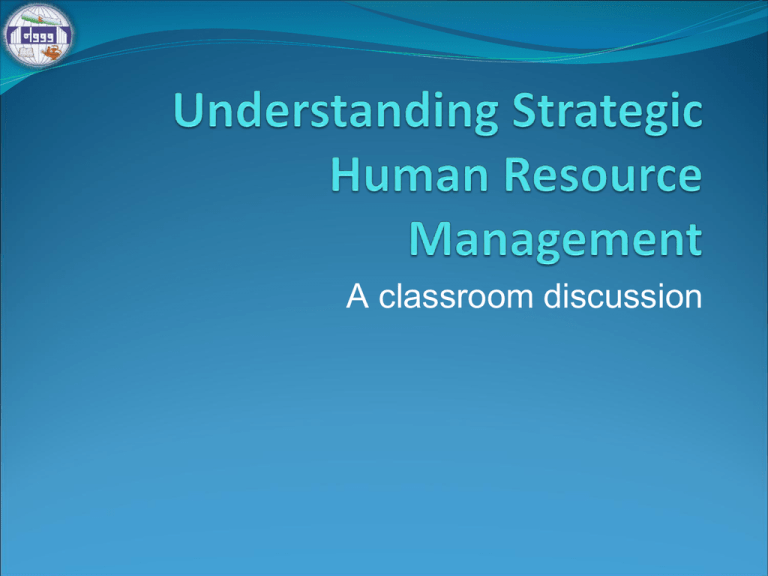
A classroom discussion Number Game ! 145 4300 4000 16000-20000 20000-25000 22 The Great Pyramid of Giza A closer one Wonders ! Inventions Innovations Practice Success (or failure) OUR primitive learning ! Power of TEAM Wisdom of Goose ! Performance is the CORE People Structure Technology Performance What is strategic ? Seeing in the big picture and aligning all the elements of system to generate synergetic efforts for the achievement of long term goal of the organization Strategic in terms of: Time Efforts Resources Value addition Driving Forces for being strategic Increasing Domain Complexity Accelerating Market Volatility Intensified Speed of Responsiveness Diminishing Individual Experiences People and Technology E-governance example “Maybe pushing on that wall to the right will give some space.” 16 “Oops!” 17 Shared Vision A Chief Finance Officer (CFO) asks CEO: “What happens if we invest in our people and then they leave us?” CEO: What happens if we don’t, and they stay?” Strategic HRM the use of planning; A coherent approach to the design and management of personnel systems based on an employment policy and workforce strategy and often underpinned by a ‘philosophy’; Matching HRM activities and policies to some explicit business strategy; Seeing the people of the organization as a ‘strategic resource’ for the achievement of ‘competitive advantage’. Strategic Fit: Vertical Integration Organizational Strategy HR Strategy Strategic Fit: Horizontal Integration HR Strategy HR Functions and activities HRM: Resource based view People management systems construct These systems create value to extent that they impact stock, flow, & change of intellectual capital/knowledge Basis of core competencies HRM: Resource based view “Skill” concept expanded to consider stock of intellectual capital “Behavior” concept reconceptualized as flow of knowledge within organization through its creation, transfer, & integration Core competence arises from combination of organization’s stock of knowledge & flow of knowledge through creation, transfer, & integration in a way that is valuable, rare, inimitable, & organized HRM: Resource based view Dynamic capability construct illustrates interdependent interplay between workforce & core competence as it changes over time Five Ps of SHRM Philosophy Statements of how organization values & treats employees; essentially culture of the organization Policies Expressions of shared values & guidelines for action on employee-related business issues Programs Coordinated & strategized approaches to initiate, disseminate, & sustain strategic organizational change efforts necessitated by strategic business needs Five Ps of SHRM Practices HR practices motivate behaviors that allow individuals to assume roles consistent with organization’s strategic objectives Three categories of roles: Leadership Managerial Operational Five Ps of SHRM Processes Continuum of participation by all employees in specific activities to facilitate formulation & implementation of other activities Harvard Model (Beer et.al. 1984) Linear model of SHRM Matching model of SHRM (Devanna et.al.1984) High performance management Careful and extensive systems for recruitment, selection and training; formal systems for sharing information with the individuals who work in the organization; Clear job design; High-level participation processes; Monitoring of attitudes; Performance appraisals; Properly functioning grievance procedures; Promotion and compensation schemes that provide for the recognition and financial rewarding of the high-performing Members of the workforce. US Department of Labor (1993) High commitment management A form of management which is aimed at eliciting a commitment so that behavior is primarily self-regulated rather than controlled by sanctions and pressures external to the individual, and relations within the organization are based on high levels of trust. High involvement management Treating employees as partners in the enterprise whose interests are respected and who have a voice on matters that concern them. The aim is to create a climate in which a continuing dialogue between managers and the members of their teams takes place in order to define expectations and share information on the organization’s mission, values and objectives. Cultural integration is crucial SHRM and Performance Learning Reflection/Feedback brsigdel@nasc.org.np
